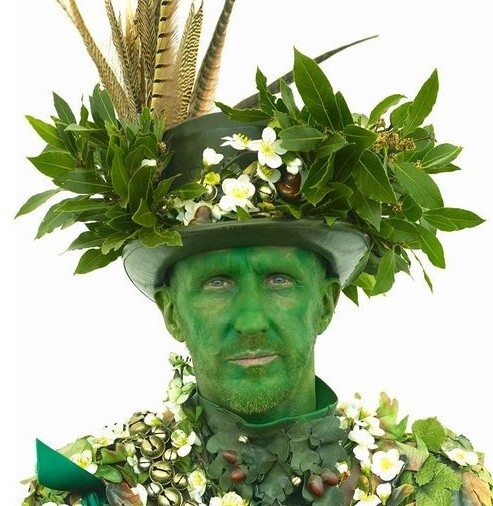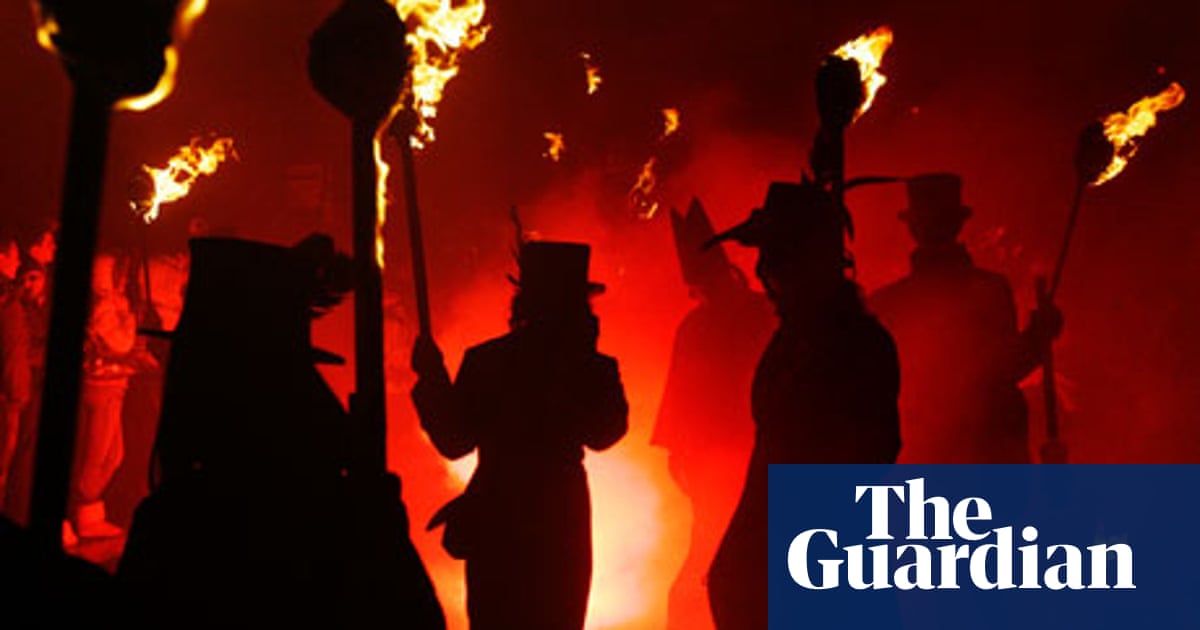Lovers of old customs lament the disappearance of the old customs associated with All Hallows’ Eve, but it is forgotten that two of the chief pieces of ritual, the lighting of fires and the eating of cakes, have been transferred from October 31 to the 5th of November.
Long before the Gunpowder Plot affair, bonfires were lighted on the hilltops of Ireland and Scotland; Sir John Sinclair in his Statistical Account of Scotland, published in 1793, mentioned that in the Highlands bonfires used to be lighted and consecrated cakes baked on the 1st of November (the first day of winter), and also on the 1st of May (the first day of spring). In North Wales the autumnal fire was called Coel Coeth; it was accompanied by such ceremonies as leaping through the fire (as on St. John’s Eve in Germany and other countries), throwing nuts in the fire, and biting at apples suspended from a string. One sometimes sees people leap across a half-consumed bonfire on the 5th of November, saying in excuse that it was an old custom.
Even the parkin and toffee of the 5th of November may be relics of the ceremonial cakes formerly offered - perhaps a symbol of sacrifice dating from pagan times. On All Hallows’ Eve “soul-cakes,” a kind of oatcake, used to be given to the poor in Catholic Lancashire, and Yorkshire parkin, a compound of oatmeal and treacle, is perhaps a development of the soul-cake. In parts of Yorkshire All Hallows’ Eve is still called “cake night,” and an old Halloween custom everywhere was “going a-soul-ing,” or begging for soul-cakes. In remote parts of the Highlands and of Western Ireland it used to be customary to provide cakes for the souls of the departed on All Hallows’ E’en, that being the only night upon which they could speak and eat.
From Thomas Hardy’s The Return of the Native:
While the men and lads were building the pile, a change took place in the mass of shade which denoted the distant landscape. Red suns and tufts of fire one by one began to arise, flecking the whole country round. They were the bonfires of other parishes and hamlets that were engaged in the same sort of commemoration. Perhaps as many as thirty bonfires could be counted within the whole bounds of the district.
It was as if these men and boys had suddenly dived into past ages, and fetched therefrom an hour and deed which had before been familiar with this spot. The ashes of the original British pyre which blazed from that summit lay fresh and undisturbed in the barrow beneath their tread. Festival fires to Thor and Woden had followed on the same ground and duly had their day. Indeed, it is pretty well known that such blazes as this the heathmen were now enjoying are rather the lineal descendants from jumbled Druidical rites and Saxon ceremonies than the invention of popular feeling about the Gunpowder Plot.
Moreover to light a fire is the instinctive and resistant act of man when, at the winter ingress, the curfew is sounded throughout Nature. It indicates a spontaneous, Promethean rebelliousness against that fiat that this recurrent season shall bring foul times, cold darkness, misery and death. Black chaos comes, and the fettered gods of the earth say, Let there be light.
And we’ll pop over to Wikipedia for a quick summary:
Historians have often suggested that Guy Fawkes Day served as a Protestant replacement for the ancient Celtic festival of Samhain or Calan Gaeaf, pagan events that the church absorbed and transformed into All Hallow’s Eve and All Souls’ Day. In The Golden Bough, the Scottish anthropologist James George Frazer suggested that Guy Fawkes Day exemplifies “the recrudescence of old customs in modern shapes”. David Underdown, writing in his 1987 work Revel, Riot, and Rebellion, viewed Gunpowder Treason Day as a replacement for Hallowe’en: “just as the early church had taken over many of the pagan feasts, so did Protestants acquire their own rituals, adapting older forms or providing substitutes for them”. While the use of bonfires to mark the occasion was most likely taken from the ancient practice of lighting celebratory bonfires, the idea that the commemoration of 5 November 1605 ever originated from anything other than the safety of James I is, according to David Cressy, “speculative nonsense”. Citing Cressy’s work, Ronald Hutton agrees with his conclusion, writing, “There is, in brief, nothing to link the Hallowe’en fires of North Wales, Man, and central Scotland with those which appeared in England upon 5 November.”
As Guy Fawkes was hung, drawn and quartered there isn’t an obvious link with fire and the 5th November, so it seems obvious to me that this is a co-opting of the fire festivals at this time and/or a resurgence of interest in it, with an anti-Catholic twist.
As Hardy says, lighting fires on the first night of winter is a deep, instinctive thing and there are many such festivals at this time around the world, ike Diwali.
More fires and less fireworks would be nice (and dialing back a festival of over-consumption like Halloween would be a good thing but difficult to do now with the momentum it now has).


